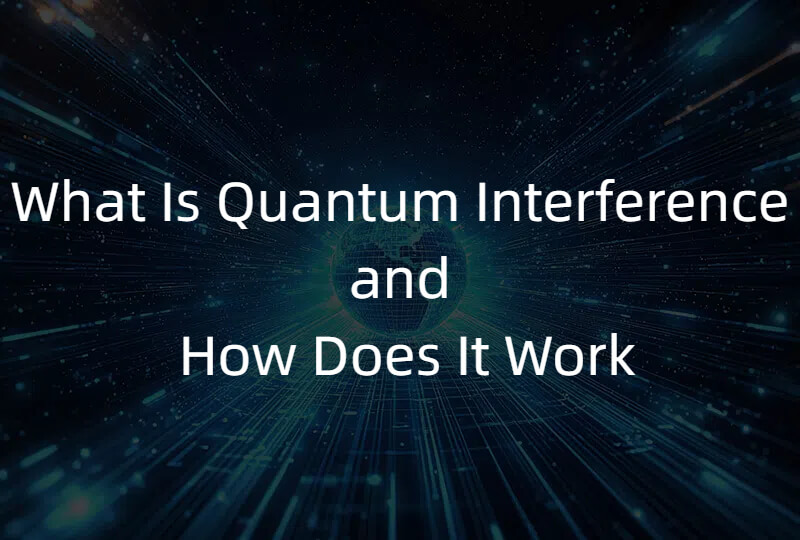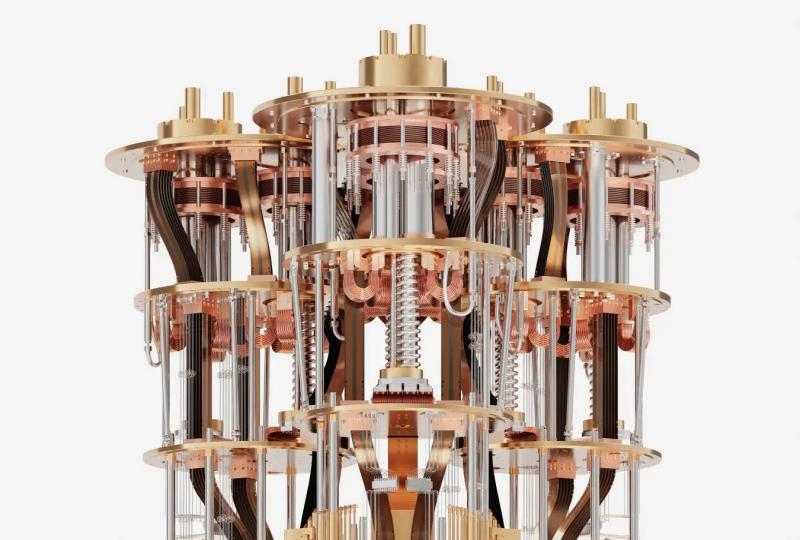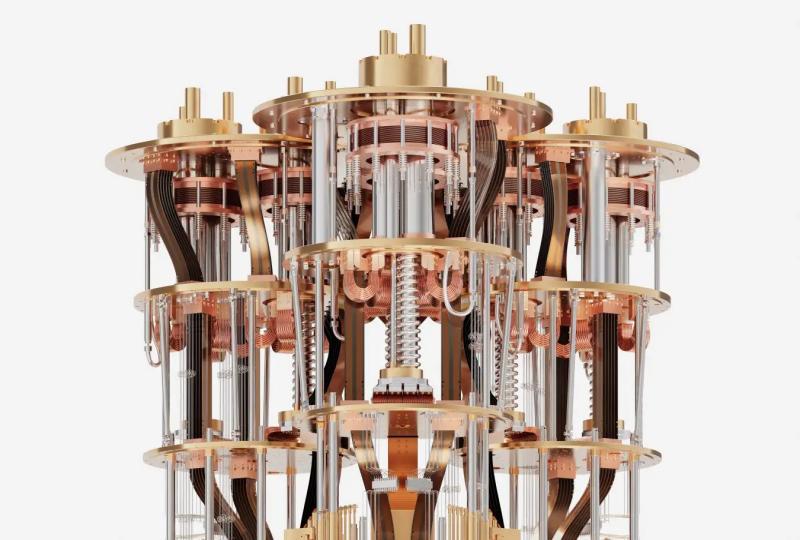What Is Quantum Interference and How Does It Work? [2025]
2025.04.25 · Blog
Quantum interference is a core concept in quantum mechanics and essential to understanding quantum behavior.
This article focuses on helping you build a deep understanding of quantum interference itself — including what it is, what causes it, how it's demonstrated through the double-slit experiment, and how scientists observe it in real-world experiments.
If you're interested in how interference powers quantum computing, feel free to check out our dedicated article on that topic.

What is Quantum Interference?
Quantum interference is a fundamental phenomenon in quantum mechanics where the probability amplitudes of quantum states combine—either constructively or destructively—to influence the likelihood of outcomes. Unlike classical interference, which deals with overlapping physical waves (like sound or water), quantum interference arises from the wave-like behavior of particles such as electrons, photons, and even atoms.
In quantum theory, particles are described by wavefunctions, which contain complex-valued probability amplitudes. When a quantum system can evolve along multiple possible paths—such as going through two slits in a barrier—each path has an associated amplitude. These amplitudes can interfere when the paths are indistinguishable, meaning we cannot tell which path the particle actually took.
-
Constructive interference happens when the amplitudes reinforce each other, increasing the probability of a particular outcome.
-
Destructive interference occurs when amplitudes cancel out, reducing or even eliminating the chance of an outcome.
This interference of probabilities—not just measurable properties—leads to surprising results that defy classical intuition. It's what gives quantum mechanics its strange and powerful nature.
In short, Quantum interference isn't just particles "bumping into each other"—it's the result of probability waves interacting in a way that determines what we ultimately observe.
This principle underpins many famous quantum experiments and is one of the core features that enable quantum computers to work. Without quantum interference, quantum computing would be no more powerful than classical computing.
What Causes Quantum Interference?
Quantum interference is caused by the wave-like nature of quantum particles and the mathematical rules that govern how their probability amplitudes combine. At the heart of this lies a key principle in quantum mechanics: superposition.
Superposition: The Root of Interference
In the quantum world, a particle like an electron or a photon doesn't have to be in just one state—it can exist in a superposition of multiple states at once. That means it can "take multiple paths" or "be in multiple places" simultaneously, at least until it is measured.
Each of these paths or possibilities is associated with a complex probability amplitude—a number that carries both magnitude and phase (like a vector with direction). When two or more such amplitudes exist for the same outcome, they are added together to determine the total probability amplitude.
The Role of Phase
The phase of these amplitudes is crucial. When two amplitudes are in phase (aligned), they interfere constructively—making an outcome more likely. When they are out of phase (opposite directions), they interfere destructively—reducing the probability or even canceling it entirely.
So, quantum interference happens when:
-
A quantum system evolves along multiple indistinguishable paths
-
Each path contributes a probability amplitude
-
These amplitudes are added together, and their relative phases determine the outcome
Key Condition: Indistinguishability
A critical condition for interference is that the paths must be indistinguishable. If you can, even in principle, determine which path the particle took (say, by measuring it), the interference pattern disappears. This is why measurement collapses the wavefunction—it destroys the superposition and the possibility of interference.
In essence, Quantum interference is caused by the superposition of wavefunctions and the interference of their complex amplitudes. It's all about how these amplitudes add up—not just whether the particle “goes left or right,” but how the probability waves for those options interact.
Explaining Quantum Interference with the Double-Slit Experiment
One of the most iconic experiments in all of physics—the double-slit experiment—beautifully illustrates quantum interference in action. First performed with light in the early 1800s, and later repeated with electrons, atoms, and even large molecules, this experiment reveals how deeply strange and non-intuitive the quantum world can be.
The Setup
Imagine a wall with two narrow slits, and a screen placed behind it. You fire particles—such as photons or electrons—one at a time toward the slits. Each particle must "choose" a path: going through slit A, slit B, or somehow both.
You might expect that the particles would either go through one slit or the other, and the resulting pattern on the screen would be two bright stripes, like you'd see with paintballs. But that's not what happens.
The Result: An Interference Pattern
Instead, what you observe is a series of bright and dark fringes—an interference pattern. This is exactly what you'd expect if waves, not particles, were interfering. The bright fringes appear where the wave amplitudes from both slits constructively interfere, and the dark areas are where they cancel out (destructive interference).
Even more fascinating: this pattern emerges even when particles are sent one at a time, with no other particle to "interfere" with. It's not two particles interfering—it's each particle interfering with itself as a result of taking both paths simultaneously in superposition.
What If We Try to Measure the Path?
Here's where quantum mechanics shows its mysterious side. If you place a detector to find out which slit the particle went through, the interference pattern disappears. You get two bands, as if the particle simply chose one slit. The act of measurement collapses the superposition, destroying the possibility of interference.
Famous quote: “If you can tell which path the particle took, the interference vanishes. The universe changes depending on whether you observe it or not.”
What This Tells Us
The double-slit experiment shows that:
-
Particles behave like waves in quantum mechanics.
-
Quantum interference comes from the superposition of all possible paths.
-
Observing (or even just being able to observe) a quantum system can change its behavior.
-
The interference pattern is not a classical effect, but the result of adding probability amplitudes.
How Do We Observe Quantum Interference?
While quantum interference sounds abstract and mathematical, it can actually be directly observed in carefully designed experiments. From laboratory setups to real-world quantum hardware, scientists have developed multiple methods to detect and verify the presence of interference in quantum systems.
1. The Double-Slit Experiment (Again)
As discussed earlier, the interference pattern on the detection screen is the most visible sign of quantum interference. When particles like photons, electrons, or even complex molecules such as C₆₀ (buckyballs) are fired toward a double-slit apparatus, the resulting fringes prove that interference is happening—even when particles are sent one at a time.
Key takeaway: The presence or absence of interference fringes is a visual confirmation of quantum interference.
2. Quantum Interference in Interferometers
Mach-Zehnder and Michelson interferometers are common tools used in quantum optics to observe interference. In these devices, a single photon is split into multiple paths using beam splitters. The paths are then recombined, and depending on their relative phase, the photon will be detected at one detector or another—clear evidence of phase-based interference.
These setups are crucial for:
-
Quantum communication protocols
-
Quantum key distribution (QKD)
-
Testing foundational quantum theories
3. Observing Interference in Quantum Circuits
In quantum computers, interference is observed through the outcomes of quantum algorithms. Quantum gates (like Hadamard and controlled phase gates) prepare qubits into superposition states and manipulate their phases. When a measurement is made, the result distribution reflects the underlying interference effects.
For instance:
-
In Grover's algorithm, destructive interference suppresses wrong answers.
-
In the Quantum Fourier Transform, constructive interference enhances the correct frequency components.
Here, the statistical output across repeated runs (often thousands of shots) shows whether the interference pattern matches the expected quantum behavior.
By watching how particles behave when we don't measure them too soon, and by analyzing the probabilistic patterns that emerge when we finally do. The structure in those patterns—bright and dark fringes, or skewed probability distributions—is the fingerprint of quantum interference.
Conclusion: Why Quantum Interference Matters
Quantum interference is not just a quirky feature of quantum mechanics—it is the very engine behind the power of quantum computing. From double-slit experiments to quantum gates, interference allows quantum computers to manipulate probability amplitudes in ways that classical computers simply cannot.
By understanding how interference works, both theoretically and practically, we begin to appreciate how quantum mechanics transforms into a computational advantage.
As we continue to develop quantum algorithms and quantum hardware, mastering quantum interference will remain a key pillar in unlocking the full potential of quantum technology.
FAQs about Quantum Interference
Q1: Is quantum interference the same as classical wave interference?
While both involve constructive and destructive patterns, quantum interference deals with probability amplitudes of particles, not just physical waves. The principles are similar, but the implications in quantum mechanics are deeper and less intuitive.
Q2: Can quantum interference be observed directly?
Yes, experiments like the double-slit experiment and interference patterns in quantum circuits provide observable evidence of quantum interference. These patterns vanish if we try to measure which path the quantum particle takes.
Q3: Why is interference important in quantum computing?
It allows quantum algorithms to amplify the probability of correct outcomes and suppress incorrect ones. Algorithms like Grover's search and quantum Fourier transform depend heavily on interference.
Q4: Is quantum interference used in every quantum algorithm?
Nearly all useful quantum algorithms leverage interference, either directly or indirectly. It is a foundational mechanism that differentiates quantum computing from classical computing.
Featured Content






